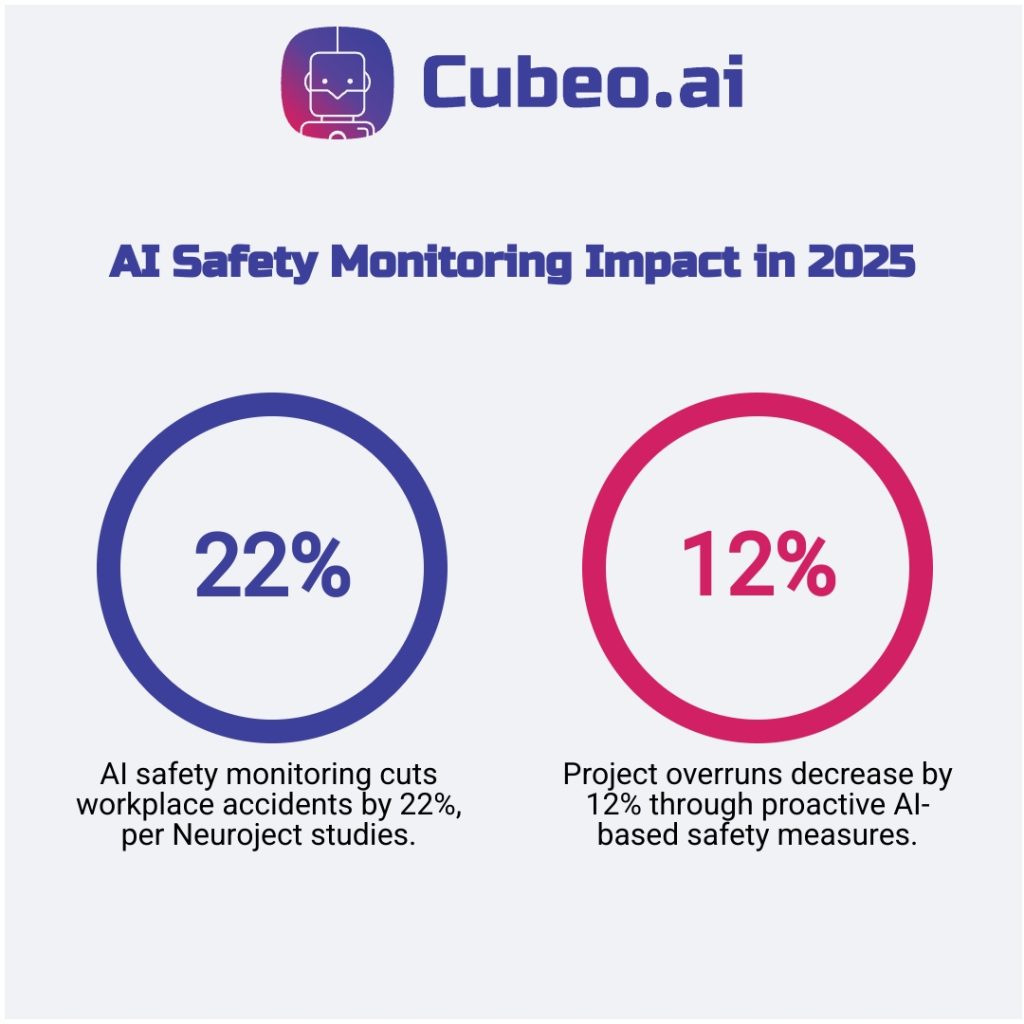Recover lost revenue from Google AI Overviews without waiting for your dev team. This playbook delivers a complete 2-week implementation system that lets you influence what appears in AI-generated summaries and track the business impact immediately.
• Deploy preview controls in 20 minutes using simple HTML tags and schema markup to influence what Google shows in AI Overviews, with validation tools to test your changes before they go live
• Track 4.4x higher-value traffic from AI search using new attribution models and Conversion Quality Rate formulas that measure engagement depth over raw click-through rates
• Build automated monitoring in 4 steps with a no-code agent blueprint that alerts you when AI summaries deviate from your intended messaging, eliminating manual checking across hundreds of pages
• Protect high-risk content with a copy-paste incident response runbook and YMYL content safeguards that prevent AI Overview errors from damaging your reputation
• Execute the complete system in 10 days following the sprint framework that covers everything from content inventory to team training, with specific SLAs and measurable KPI thresholds
Ready to transform how your content performs in the age of AI search? The step-by-step implementation starts now.
Google AI Overviews: The Practitioner's Playbook for 2025
You can recover conversion value from Google AI Overviews without an engineering sprint. This playbook shows you how to detect AIO presence, optimize preview controls, and deploy automated monitoring in two weeks.
Google AI Overviews (AI-generated answer boxes above search results) now appear globally, changing how users discover content. These summaries reduce traditional click through rates while creating new opportunities for high-intent traffic discovery.
Key terms simplified: Preview controls let you influence what text Google shows in the overview by restructuring your first 120 characters and adding targeted schema fields. Schema parity means ensuring your structured data matches your actual page content.
This guide delivers a 5-step implementation checklist you can execute without dev tickets, plus measurable KPI thresholds for tracking conversion quality over raw traffic volume. You’ll also get a no-code Agent blueprint to monitor your AI Overview presence automatically.
The content optimization strategies that work across traditional search and AI-powered discovery start with understanding the optimization landscape.
What Are Google AI Overviews and Why They Matter in 2025
AI Overviews are AI-generated answer boxes that appear automatically above traditional search results, while AI Mode requires users to enable Google’s conversational search interface. Both pull from your content, but Overviews have immediate business impact because they reach every searcher by default.
Quick task: Scan your top 200 revenue pages for AIO presence. Any page with an AI Overview becomes a high-priority candidate for preview controls and schema parity fixes.
The scale is massive. AI Overviews appear in nearly 55% of Google searches and have grown 115% in frequency since March 2025, with global availability across 200 countries and 40+ languages.
User behavior has shifted dramatically. Pew Research shows visits to pages with AI summaries result in clicks on traditional search results only 8% of the time (versus 15% without summaries), and users click links within AI summaries in just 1% of sessions.
The implication is simple: win visibility in both classic results and AI Overviews. Google Search Central (May 21, 2025) preview control guidance shows how to influence what appears in overviews, making this a technical skill every practitioner needs.
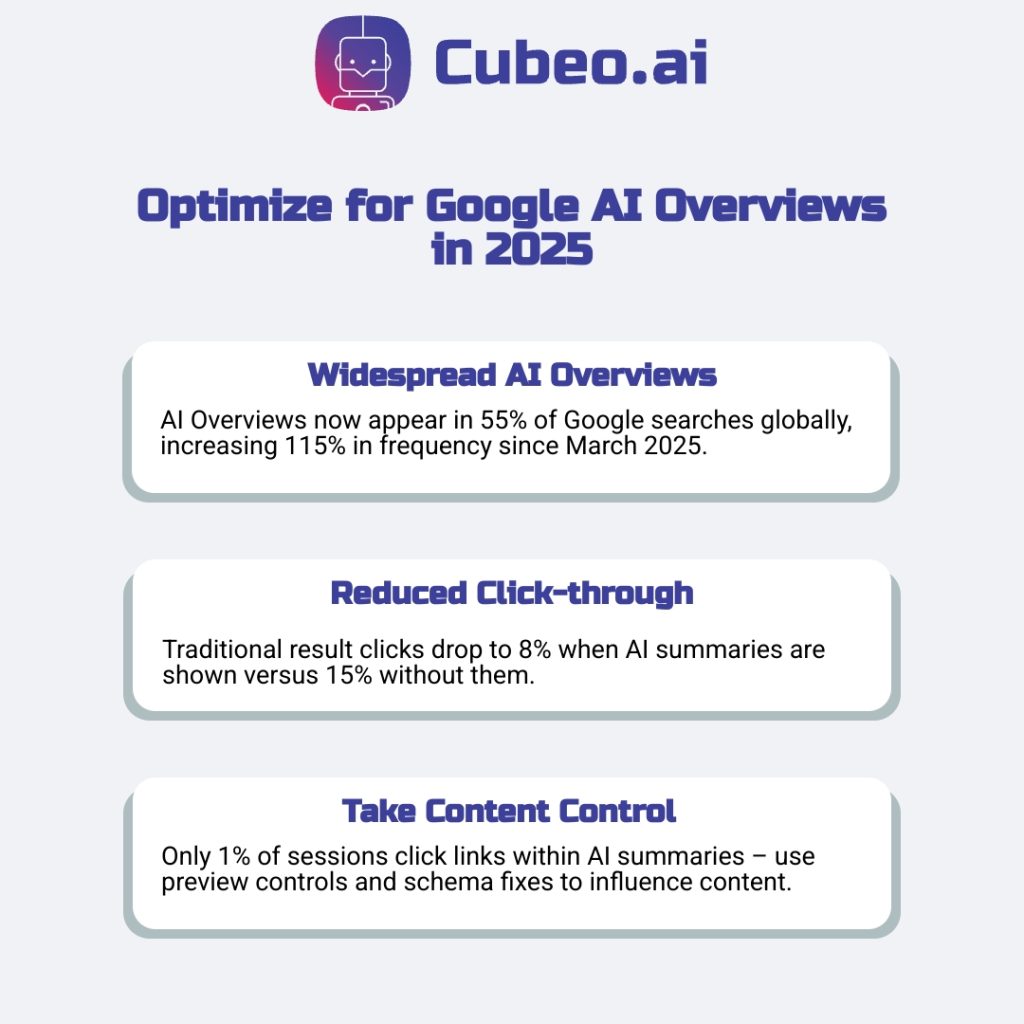
5-Step Optimization Checklist for AI Overview Visibility
Most businesses miss the AI Overview opportunity. Only 12.4% of domains have structured data implementation, yet companies like Rotten Tomatoes see 25% higher click-through rates with proper schema markup.
Step 1: Implement structured data markup: Add Schema.org markup using JSON-LD (a small block of code you paste in the page head). Focus on Article, Product, FAQ, and HowTo schemas. This helps AI systems process and understand your content structure. Quick task (20 min): paste minimal Product JSON-LD into one page head and run Google’s Rich Results Test.
Step 2: Optimize content structure: Ensure H1 parity with meta description and logical H2/H3 hierarchy. Structure answers to common questions in your first 120 characters (test 120-160) — this short blurb is what AIOs most often show.
Step 3: Configure preview controls: Use data-nosnippet (HTML tag preventing text from appearing in snippets) only for truly sensitive lines like private contact or contract numbers. Overuse can hide content from rich results — always test in staging.
Step 4: Handle sensitive content: Apply preview controls to pricing, proprietary information, or content that shouldn’t appear in AI summaries.
Step 5: Test and validate: Use Google’s validation tools to verify schema implementation. Check preview text matches your intended messaging.
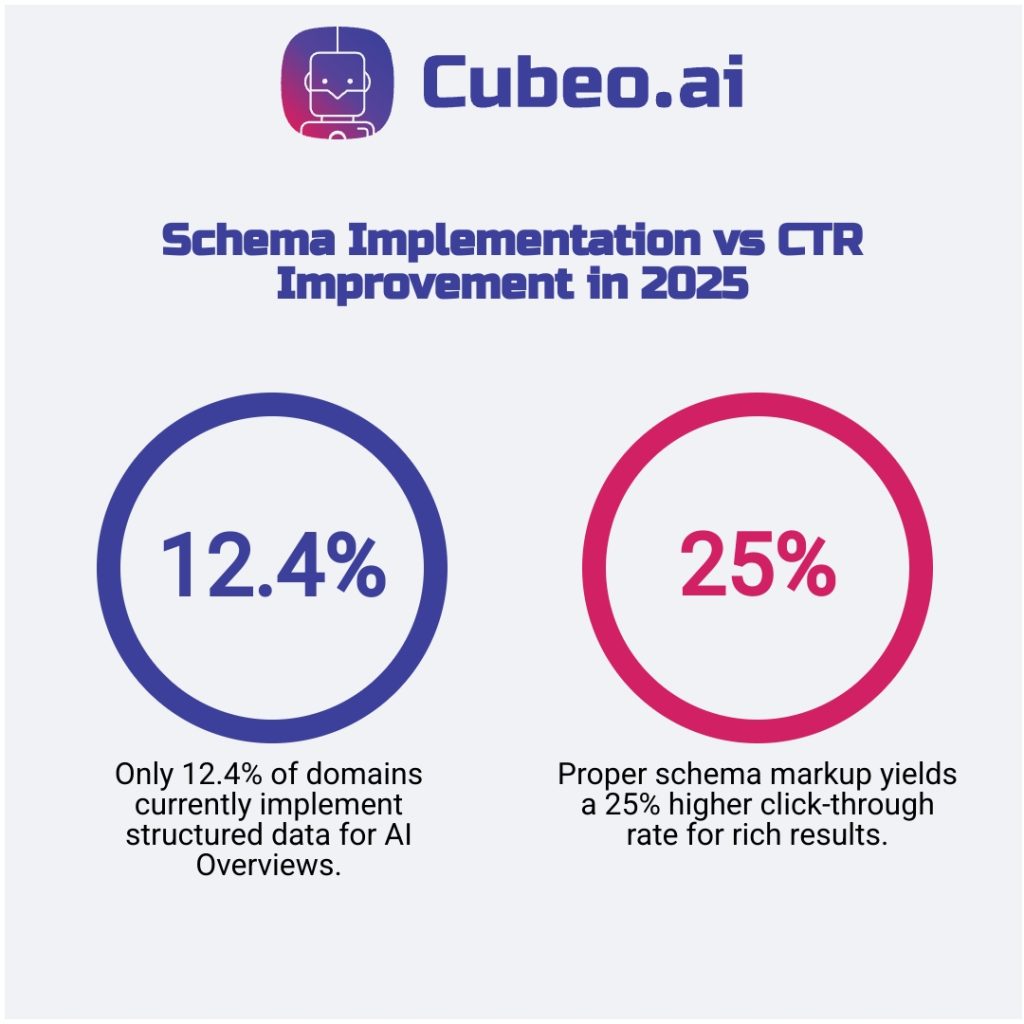
Measuring AI Overview Performance Beyond Click Through Rates
Exploding Topics reports AI search traffic is 4.4x more valuable than organic, while Stanford HAI shows 78% business AI adoption. Engagement quality beats raw click-through rates.
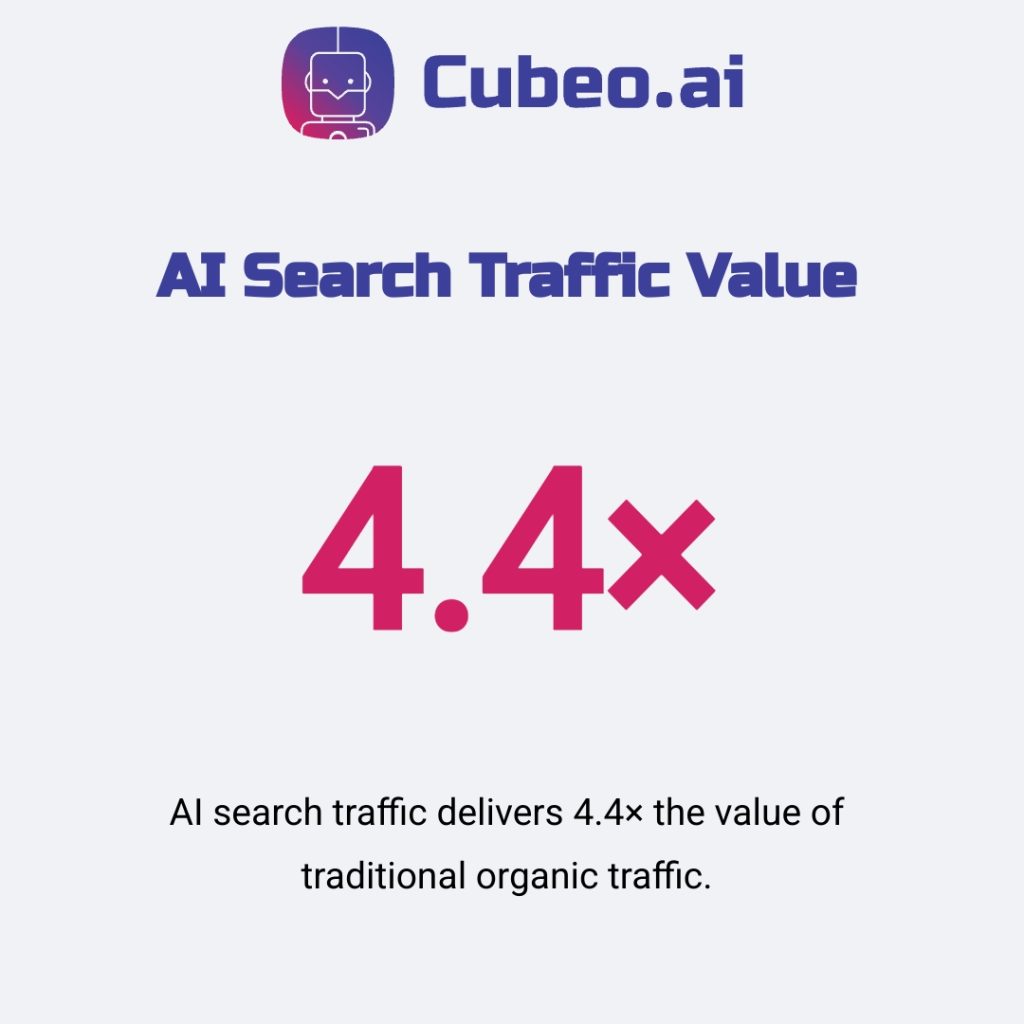
Build an AI Overview (AIO) Watcher Agent for Automated Monitoring
Manual monitoring doesn’t scale. Index.dev reports 85% of organizations use AI agents, with 64% focused on automating multi-step processes like content monitoring.
No-code agent blueprint: Follow this 4-step implementation:
- Upload your URL list to Zapier/Make
- Fetch daily AIO snippet via SERP API
- Compute similarity vs canonical content and store results
- Open Slack/Jira ticket when threshold breached
Alert configuration: Trigger alerts when preview text deviates more than 30% from canonical content. Measure using semantic similarity (embedding cosine similarity <0.7) or fallback to 30% character difference on first 320 characters. Validate on 20-50 pages and adjust thresholds as needed.
Integration and cadence: Connect alerts to your existing workflow tools. DigitalDefynd case studies like G&J Pepsi show companies reducing manual input while improving real time visibility. Use daily checks for high-revenue pages, weekly for evergreen content, monthly for long-tail keywords.
The Cubeo AI Triggers system demonstrates automated SEO monitoring with customizable alert thresholds and human-in-the-loop validation.
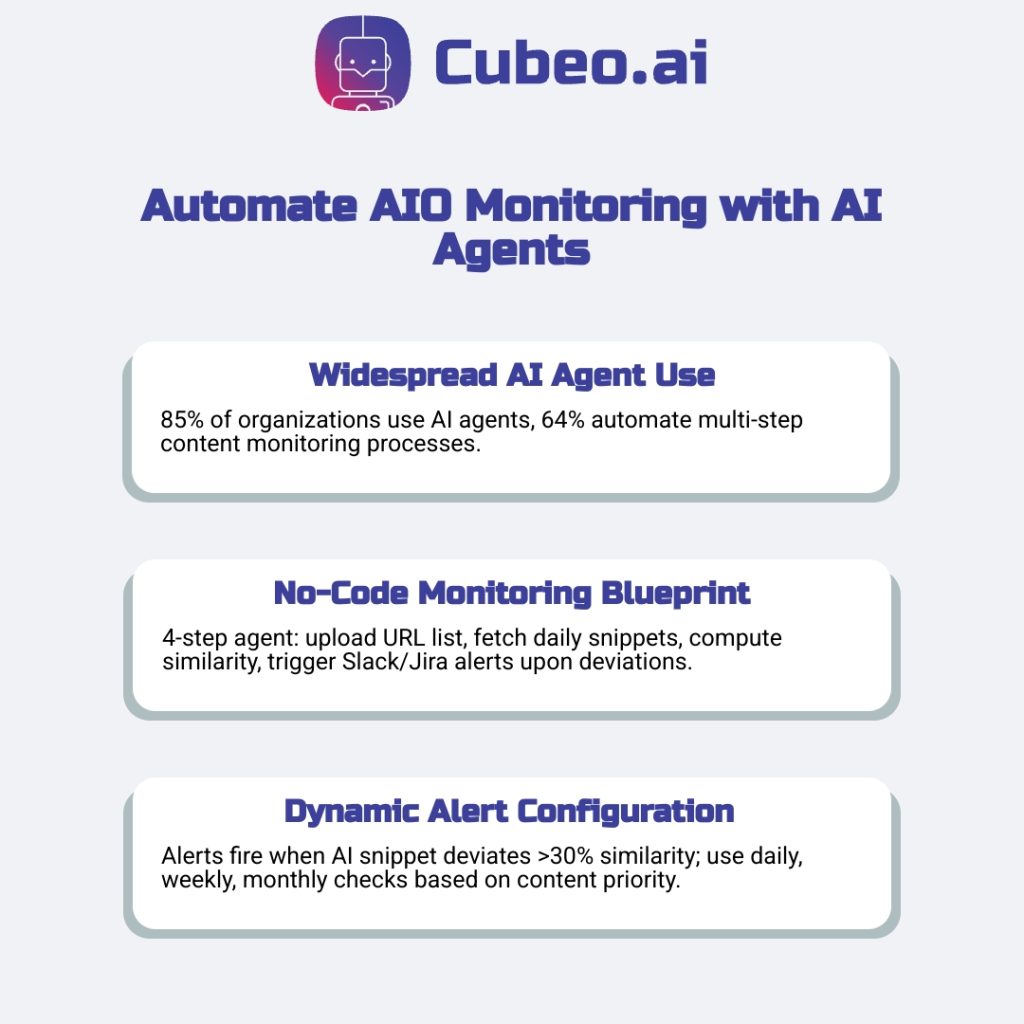
Risk Management and Safety Guidelines for AI Search
AI Overview errors can damage your business reputation overnight. Neuroject’s case studies show companies integrating AI into safety monitoring cut accidents by 22% and project overruns by 12%, proving proactive safeguards work.
Content grounding strategies: Implement retrieval-augmented generation pipelines that anchor AI responses to verified source material, preventing hallucinations in AI-generated summaries.
